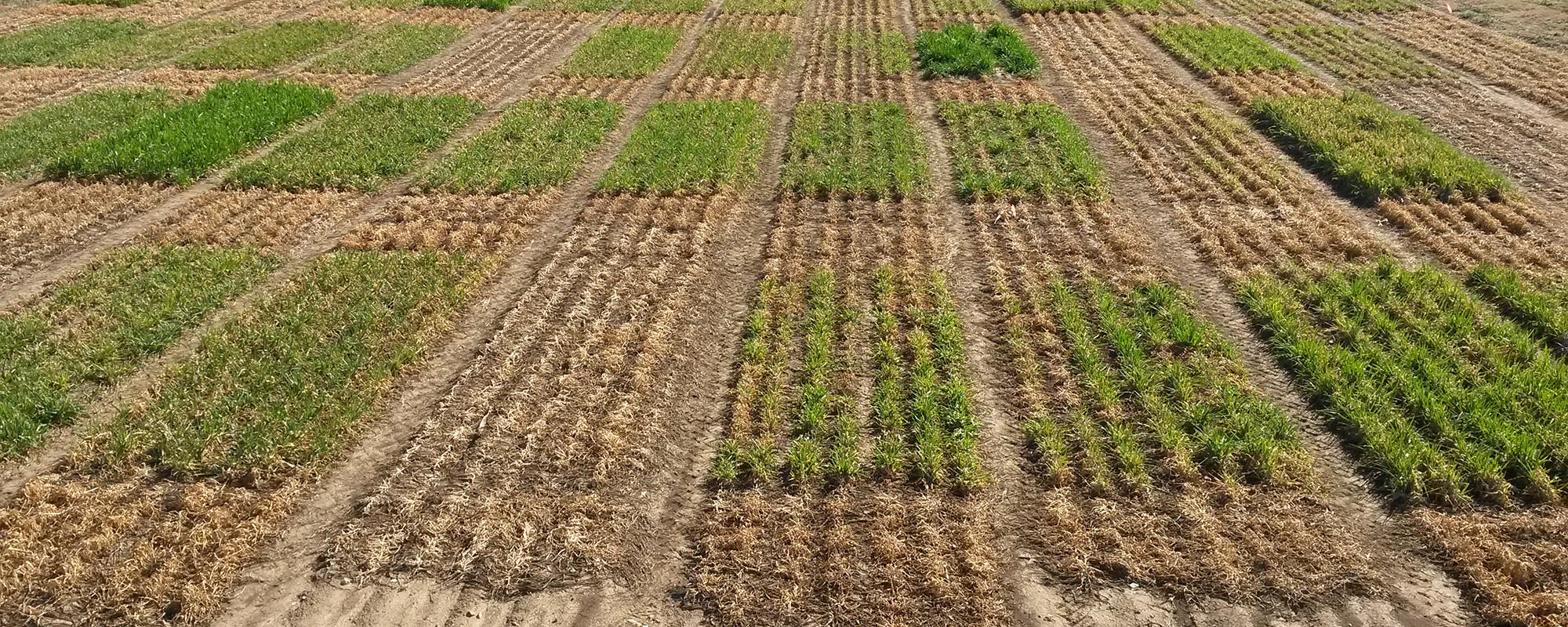 Small grains such as wheat, rye, oat and triticale are often planted in Oklahoma as a winter forage for livestock. The largest portion of Oklahoma acreage planted to small grains is winter wheat, which can be grazed until jointing or first hollow stem then harvested for grain. However, some producers may choose to graze out the crop depending upon economic advantages and the crop condition.
Small grains such as wheat, rye, oat and triticale are often planted in Oklahoma as a winter forage for livestock. The largest portion of Oklahoma acreage planted to small grains is winter wheat, which can be grazed until jointing or first hollow stem then harvested for grain. However, some producers may choose to graze out the crop depending upon economic advantages and the crop condition.
In certain graze-out scenarios, rye, triticale, oat or mixtures can often be utilized to produce more forage than wheat. Seasonal growth patterns, soil type and future crops should be carefully considered before selecting which crop to plant.
The winter hardiness of wheat, rye and triticale grown in our area is usually not in question. However, the Noble Research Institute recently released two forage-type oat cultivars. We often get questions regarding their winter hardiness.
In general, oats have less winter hardiness than wheat, rye or triticale. It is common for oat cultivars to show either complete or partial senescence during the winter months. NF402 released through Oklahoma Genetics Inc. and Heavy Grazer II released through East Texas Seed have both shown excellent winter hardiness when compared to other oat cultivars grown in the Southern Great Plains.
Our main focus within the small grains breeding group is to develop cultivars with improved forage traits that include better fall-season and season-long forage yield, good recovery after grazing, and – particularly for oat – good winter hardiness.
We try to achieve this by planting our oat research plots in early to mid-September, depending upon soil moisture. Therefore, in order to advance through the six to eight years of field trials, the oats must survive the winter and produce a sufficient amount of seed to continue the selection process.
From 2016 to 2018, the Noble Research Institute planted small grains demonstration plots that included NF402 and Heavy Grazer II oat in several locations across Oklahoma and Texas. Oklahoma locations included Ames, Apache, Chickasha, El Reno, Leedey and Randlett. Texas locations included Direct, Mt. Pleasant and Sherman.
One objective was to determine if the oats would winterkill in the northern locations. While low temperatures varied across the locations, Jan. 10 provided the lowest temperature at several locations in 2016. Low temperatures of 16 degrees F in Apache, Oklahoma, and 13 degrees F in Ames, Oklahoma, were recorded, and no significant winterkill was noticed in either of the oat cultivars.
In 2017, we planted an additional oat winter hardiness trial in Leedey, Oklahoma. The new trial included 70 entries previously selected for their winter survival at the other locations along with 10 of our advanced experimental entries. The goal was to identify new cultivars with improved winter hardiness to add into our oat breeding program. A low temperature of -7 degrees F was recorded on Jan. 7 at the closest Mesonet sites in Camargo, Oklahoma, and Butler, Oklahoma. Three dates in total recorded temperatures falling below 0 degrees F. On Feb. 6, severe senescence was noticed on all oat entries and a few were considered 100 percent winterkilled. However, several entries had started green-up and many had live tillers with new regrowth below the soil surface. The amount of recovery was exciting to see after such low temperatures. We harvested several plants from our experimental entries with excellent winter hardiness and forage growth to add back into our advanced nursery. Furthermore, 30 of the entries were selected to continue with further testing to determine the mechanisms of winter hardiness.
We strive to answer great agricultural challenges through a focus on research that will help farmers and ranchers improve land stewardship and productivity regionally, nationally and internationally. Understanding the mechanisms and improving winter hardiness in oat will allow us to provide more tools for farmers and ranchers through improved cultivars but may also help with answering questions regarding winter hardiness in other species.
Source: Noble Research Institute



Leave A Comment